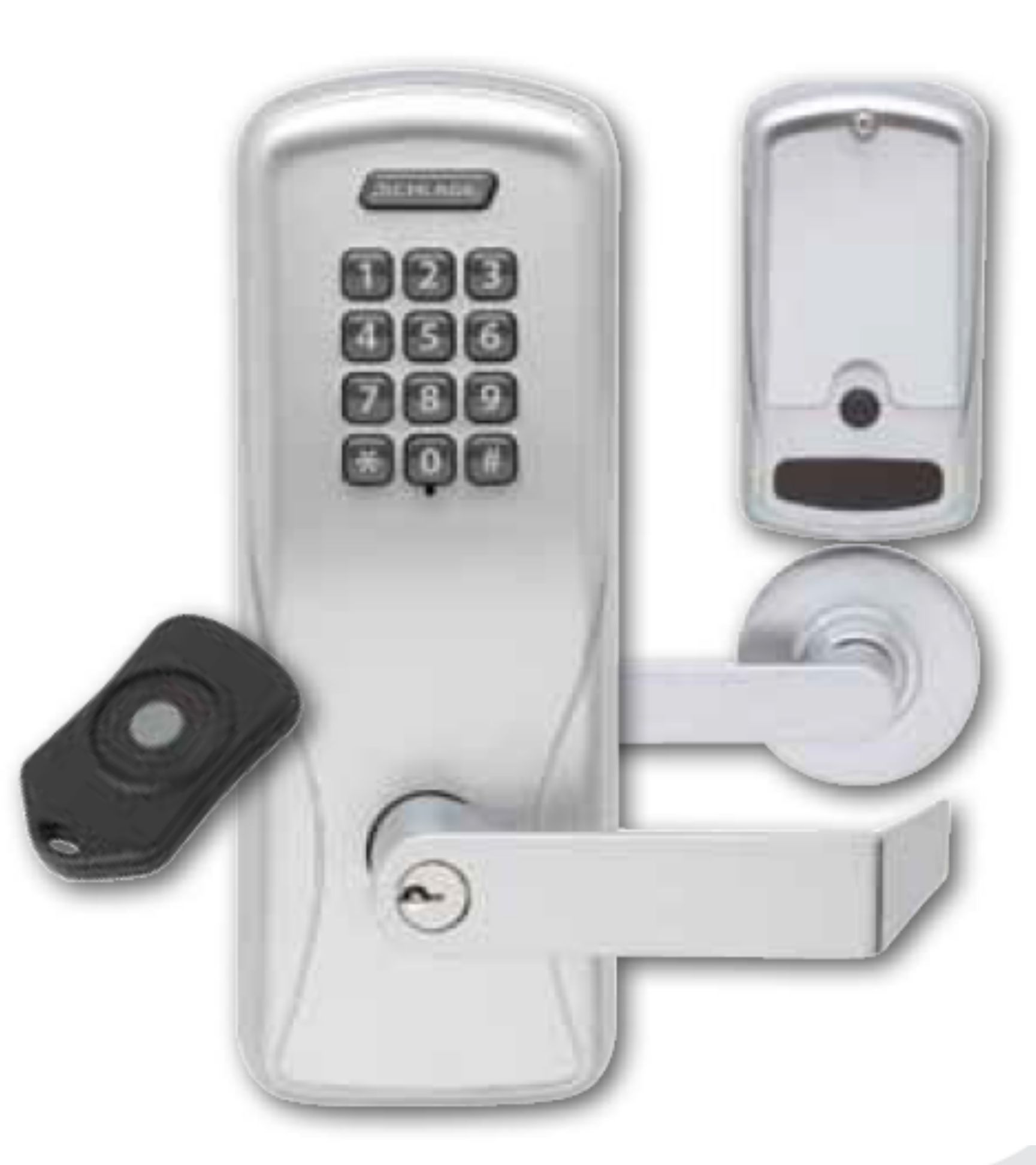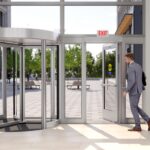Are you interested in trying a sample of Schlage’s new CO-220? Read on.
It has been almost a year since the tragic school shooting at Sandy Hook Elementary School in Newtown, Connecticut, and in that time I have written a number of posts about school security. I’ve posted many “creative solutions” for classroom lockdown, and discussed statistics, legislation in progress, methods being implemented by some schools, and news of other school violence.
We need to continue to put processes in place which protect our schools, within the constraints of budget, code requirements, and common sense. Locked exterior doors and other perimeter security, a system for controlling visitor access, a protocol for lockdown if an intruder enters the building, and an emergency plan to address a crisis – whether the crisis is an intruder, natural disaster, severe weather, fire, or other emergency or evacuation. It takes research, planning, and possibly some help from an expert, and funding. This may seem like an oversimplification, and there are other issues to be taken into account, but I’d like to focus once again on the topic of lockdown.
There are SO MANY products that have hit the news as solutions for classroom lockdown – most of them focusing on securing the doors at a very low cost. Many of these products have one or more of the following issues:
A) Prevent the door from latching, which is a problem if the door is fire-rated (fire doors must latch when closed).
B) Inhibit egress or do not meet the egress requirements for one operation to unlatch the door.
C) Are not permanently attached to the door, requiring teachers to locate and attach the device during a lockdown emergency.
D) Are complicated to operate, leaving teachers uncomfortable with the procedure.
E) Allow unrestricted ability to lock or unlock the door, allowing anyone to take control of the door / room rather than limiting control to the teacher or staff member.
I have been involved with several schools who were working to upgrade their security, including the schools in my own district. Items A, B, and C are non-negotiable for me. Item D is very subjective. Some consider a classroom security lock which requires a key to lock or unlock it, too difficult for teachers to use in an emergency. I think with training, a requirement for teachers to carry their key attached to the lanyard for their ID badge, and an indicator on the lock to show which way to turn the key or that the door is locked, mechanical classroom security locks are an acceptable solution.
Generally, I don’t recommend products which allow the unrestricted ability to lock the doors as described in Item E. Some schools are advocating a push button or thumbturn on the interior lever – ie. an office function lock, to allow the teachers to quickly lock their doors without needing to find a key. While this does make it easier for teachers to lock their doors quickly, this solution is not without risks of its own, as it also allows anyone else to lock the doors – mischievous students, irate parents, and others who have no business locking the classroom door.
If you aren’t convinced that the unrestricted ability to lock doors is an issue, consider this report from the Bureau of Justice Statistics – Indicators of School Crime and Safety – 2012:
- In 2011, students ages 12–18 were victims of about 1,246,000 nonfatal victimizations at school, including 648,600 thefts and 597,500 violent victimizations. This was more than the number of nonfatal victimizations that occurred at school in 2010.
-
During the 2009–10 school year, 85 percent of public schools recorded that one or more crime incidents had taken place at school, amounting to an estimated 1.9 million crimes. This translates to a rate of 40 crimes per 1,000 public school students enrolled in 2009–10. During the same year, 60 percent of public schools reported a crime incident that occurred at school to the police, amounting to 689,000 crimes—or 15 crimes per 1,000 public school students enrolled.
-
During the 2009–10 school year, 23 percent of public schools reported that bullying occurred among students on a daily or weekly basis,and 3 percent reported widespread disorder in classrooms on a daily or weekly basis.
 There’s a lot of good news in the report as well. Schools have become safer in recent decades. Increased vigilance, security measures, school-wide programs to promote what our school calls “CARE Values”, drills and planning…they’re working. But it’s possible that unrestricted locking could make it easier to perpetrate crimes at school, which could be evident in future statistics or in the courts. One recent example includes the sexual assault of a teacher by a student who locked the door and prevented other teachers from entering the classroom to assist the teacher.
There’s a lot of good news in the report as well. Schools have become safer in recent decades. Increased vigilance, security measures, school-wide programs to promote what our school calls “CARE Values”, drills and planning…they’re working. But it’s possible that unrestricted locking could make it easier to perpetrate crimes at school, which could be evident in future statistics or in the courts. One recent example includes the sexual assault of a teacher by a student who locked the door and prevented other teachers from entering the classroom to assist the teacher.
As a potential classroom solution, Schlage has recently released the CO-220 Standalone Classroom Lock. In a lockdown situation, the teacher uses a fob to remotely lock the door, and receives a visual indication that the door is locked. The fob can be worn on the lanyard of the teacher’s ID badge, so it is available when needed. The visual indicator clears up any confusion about whether the lock is locked or not, and the lock is battery-operated so it does not require wiring to be run. If more than one teacher works in the same classroom, the lock can be programmed to accept a signal from up to 10 different fobs. A variety of reader options are available for the access side of the lock, and free egress is always allowed from the egress side.
You can learn more about the CO-220 by downloading the data sheet, or by visiting the website.
Here’s a video about the product, which shows how it works:
And best of all, I have 10 Try-Me samples of the CO-220 to give to school districts who want to try the product and see how it fits into their security lockdown planning. If you are interested in getting a complete lock to try, drop me an email. If you have any questions about the CO-220, leave them in the comments and I’ll get them answered.
You need to login or register to bookmark/favorite this content.






This is a sledgehammer to crack a nut.
The issue is that someone will evil intent has already breached the perimeter of the school and is free to roam inside. Once this has happened, they can find a classroom where the door has not been secured because the teacher is not aware of the intrusion. Or they can wait for a child to go to the toilet or for break-time. Or take a hostage to force someone to open the door.
This is not the place to go into cultural and mental health issues. Possibly the only practical solution in the short term is to equip schools like prisons – with very secure perimeters, and metal detectors and body and bag searches at the entry points and armed guards roaming the interior.
Hi Ken –
I definitely recommend securing the perimeter of a school, but the classroom doors need to be secured as well. This has been proven to slow the shooter down in some of the recent shooting incidents. My kids’ elementary school was an open plan school, which had NO CLASSROOM DOORS. Lockdown drills were very scary – the kids would crouch in the corner behind a table. A shooter would have been able to move through the building with nothing to slow him (or her) down. Doors with locks were added to the classrooms last summer.
Sometimes the “intruder” is authorized to be in the building, so the secure perimeter has no effect. Once inside, the key is to buy as much time as possible so the police can respond. This is part of the emergency planning protocol and the communication plan. When police and staff/teachers are notified that an incident is in progress, they can begin to react. In that scenario, teachers need to be able to lock their doors – quickly and without difficulty. There are various ways to do that, but the method needs to be code-compliant. This lock is one option.
– Lori
One a sightly more practical aspect – When interior keyed locks are used they must be keyed as a “universal” key, that is anyone with any building key can lock any door from the interior. Most schools have gotten away from individual room by room keying but often departments – art, gym, science, etc are still keyed differently. I know cross keying is considered to be a four letter word by key system designers but this is one time they must bend the rules.
Hi Jack –
For the interior cylinders I recommend either that they be keyed alike, or better yet – with “maison keying”, which would allow any key in the system to be used on the interior cylinders.
– Lori